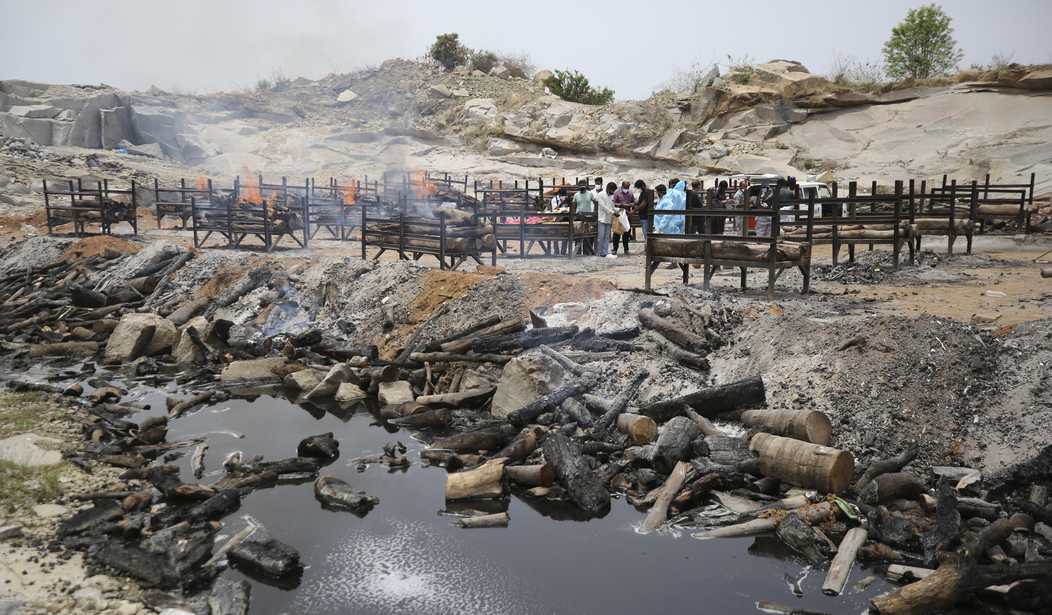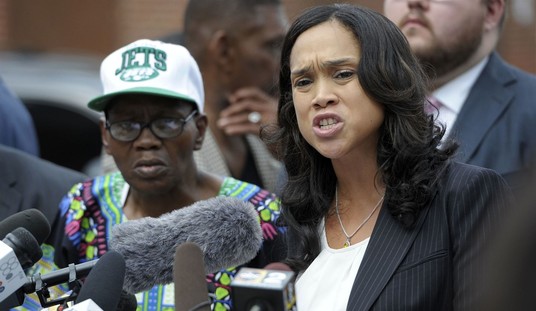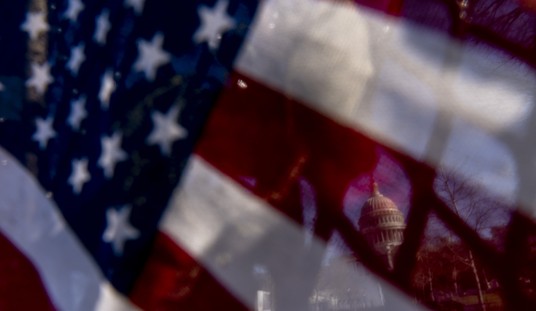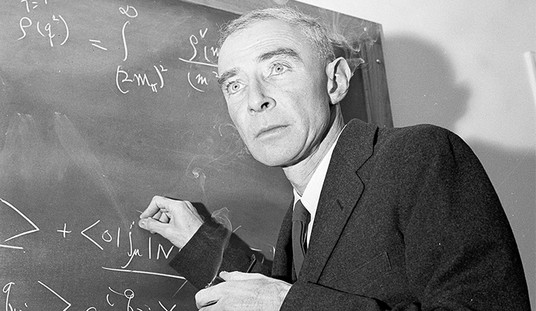The UK crushed its curve thanks to an aggressive “first doses first” vaccination program and a protracted lockdown, but check out the trends over the past week:

Granted, cases remain mercifully low overall for now. And some of the uptick may be due to the simple fact that the UK’s lockdown is finally over and people are socializing again. But the British government suspects another culprit, the B.1.617 variant from India starting to burn through the majority of the population that hasn’t been fully vaccinated yet.
“The latest estimates are that more than half and potentially as many as three quarters of all new cases are now of this variant,” the U.K. health secretary, Matt Hancock, said Thursday…
Britain’s neighbors are watching nervously. Several European countries, where vaccine rollouts aren’t as advanced as in the U.K., have placed restrictions on British visitors to try to stop the variant, known as B.1.617.2, from taking hold. France said that as of May 31 only essential travel from the U.K. is allowed. Germany has imposed a two-week quarantine on U.K. visitors. Austria is banning direct flights from the U.K. from June 1…
But British officials are concerned by B.1.617.2 for two reasons. First, British scientists advising the government estimate it might be as much as 50% more transmissible than the previously dominant B.1.1.7 variant, which was first detected in the U.K. last year and has since spread around the world.
B.1.1.7, a.k.a. the British variant, is itself much more transmissible than the common coronavirus. If the Indian variant is considerably more contagious than that strain is, you can see why the Brits are worried. Their seven-day daily average in cases now stands above 3,000 for the first time since early April, and two days ago they recorded more than 4,000 cases for the first time since April 1.
The overall low national numbers also appear less comforting when you realize that the outbreaks of the Indian variant have been highly localized — so far. That is, the variant is driving up case numbers sharply in particular communities, portending similarly sharp increases across the country as it spreads. Bolton is the hottest hot spot:

Here’s the national picture in the UK for B.1.617. Exactly one month ago, the strain was detected in 10 percent of coronavirus samples subject to genomic sequencing. One month later it’s 60 percent:

Needless to say, B.1.617 is also a prime suspect in how India went from having a mild pandemic to the most catastrophic outbreak on Earth in the span of six weeks.
The momentous question: Do the vaccines work against the Indian variant? The answer: It depends on which vaccine you’ve had and, importantly, whether you’ve had both doses.
People who had received two doses of Pfizer saw a three-fold reduction in their antibodies against the Indian variant, B.1.617, according to the study, but were still protected.
“The situation was different with the AstraZeneca vaccine, which induced particularly low levels of antibodies neutralising” the Indian variant, the study said…
The study shows that “this variant.. has acquired partial resistance to antibodies,” Schwartz said.
That may help explain why the UK has seen the Indian variant start to bite before the U.S. has. They’re using AstraZeneca along with Pfizer and Moderna, and AstraZeneca seems not to work well against B.1.617. Britain’s “first doses first” strategy, in which they held off on administering second doses for several months in order to deliver first doses to a greater share of the population, may also have left some people vulnerable. “According to Public Health England, the effectiveness of vaccines at preventing symptomatic disease after one shot falls to around 33% for B.1.617.2 compared with 50% with B.1.1.7. However, after a second shot vaccine effectiveness against B.1.617.2 rises to 81%,” the WSJ reported today. The U.S. has fully vaccinated a slightly higher share of its population than the UK has.
Still, a first dose at least provides some protection. In the UK, 74.2 percent of adults have had at least one dose versus just 62.4 percent here in the U.S. And in both countries roughly half the adult population has yet to be fully vaccinated. Even if we assume that only a third or so of adults in either country are unvaxxed and lack natural immunity, that’s a lot of kindling for the Indian variant to burn through once it gets going.
In fact, WaPo published a sobering analysis today demonstrating how the virus is still afflicting the unvaccinated population at an alarming rate. We’ve all been caught up in the good news lately about declining case counts and hospitalizations but it’s silly at this stage of the pandemic to lump the vaccinated and unvaccinated in together. We know that very few vaxxed people will end up in the ER because of COVID so it must be that the overwhelming majority of hospitalizations now involve the unvaxxed. In that case, WaPo reasoned, to see the risk to unvaccinated people, we shouldn’t be measuring case and hospitalization rates relative to the total population. We should be measuring them relative to the remaining unvaccinated population.
And when WaPo did that, they realized that the unvaxxed still face the same sort of risk they did months ago:

The Indian variant is already here, of course, although it has yet to gain the sort of foothold that it’s gaining in the UK. But then, the UK was also overrun by the B.1.1.7 variant before we were and that variant is now the dominant strain in the United States. As B.1.617 spreads here, we may end up with a diverging pandemic in which the vaccinated population carries on largely unaffected while cases surge dramatically among the unvaccinated. The degree of population-wide herd immunity we’ve already acquired will limit the spread among the unvaxxed to some degree, but maybe not as much as we’d hope. After all, unvaccinated people aren’t distributed evenly throughout the population. They’re concentrated in black, Latino, and rural white communities. We could have nasty outbreaks of the Indian variant there while communities with high vaccination rates are back to full normalcy.
Bottom line: If you’re on the fence about getting vaccinated, now’s the time. Especially since the Indian variant might not be the worst one out there at the moment.







Join the conversation as a VIP Member